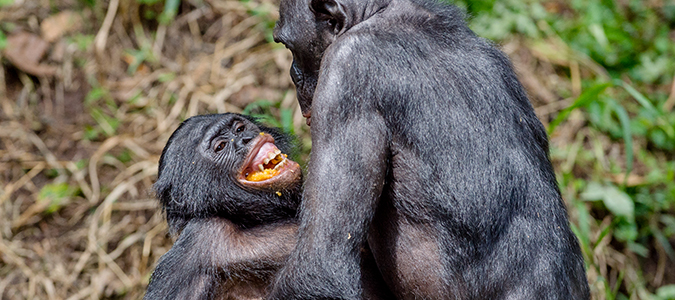
Richard Newcomb asked In his review of The Goodness Paradox: The Strange Relationship Between Virtue and Violence in Human Evolution,” by Harvard anthropologist Richard Wrangham “How,” he asks, “could our domesticated qualities and our capacity for terrible violence be reconciled?”
https://www.washingtonpost.com/outlook/humans-evolved-to-be-peaceful-why-are-we-still-so-violent/2019/01/25/05571f80-1040-11e9-84fc-d58c33d6c8c7_story.html?utm_term=.c016516c1311 (Human Evolution, WP 1.27.19)
Wrangham who seeks an answer, states “while bonobos are relatively peaceful creatures, chimpanzees exhibit no scruples about killing friends, lovers and even infants. In this way, Wrangham argues, chimpanzees and bonobos demonstrate the violence and peacefulness that coexist in humans.
Frans De Waal & Frans Lanting (1997). BONOBO. THE FORGOTTEN APE. University of California Press. Berkeley, Los Angeles London 202 pp provides the answer:
“Had bonobos been known earlier, reconstruction of human evolution might have emphasized sexual relations, equality between males and females, and the origin of the family, instead of war, hunting, tool technology, and other masculine fortes. Bonobo society seems ruled by the “Make Love, Not War” slogan of the 1960s rather than the myth of a bloodthirsty killer ape that has dominated textbooks for at least three decades” (p.2).
“Physical violence almost never occurs in bonobos, yet is common in chimpanzees (p.9)
The picture emerging from Wamba, then, is one of a female-centered society; in which even the male rank order is largely dictated by mothers. (p.78).
“They nurse for four years and are carried around even longer; their mother takes them everywhere she goes. (p.94).
Our Patrilineal Culture dominates the cultures of the world that is the principle source of our violence. We have yet to learn the lessons of the Bonobo.
JWP
